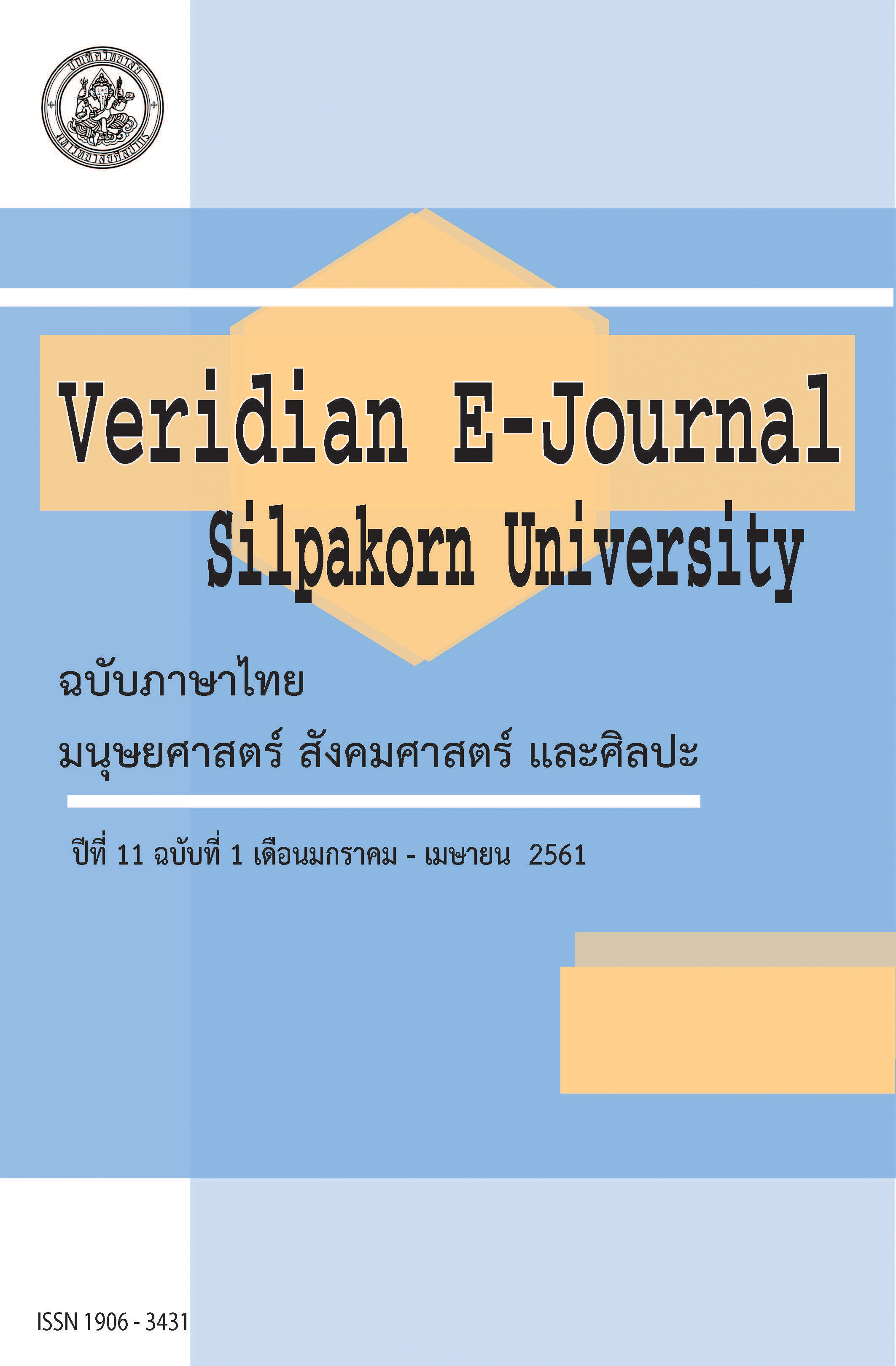การเสริมสร้างรูปแบบการรู้เท่าทันสื่อตามวิถีอโศก (The Development of Asoke’s Media Literacy Model)
Main Article Content
Abstract
งานวิจัยครั้งนี้มีวัตถุประสงค์เพื่อศึกษาหลักการของการรู้เท่าทันสื่อตามวิถีอโศก กระบวนการเสริมสร้างการรู้เท่าทันสื่อตามวิถีอโศก และปัจจัยที่ส่งผลต่อการเสริมสร้างการรู้เท่าทันสื่อตามวิถีอโศก โดยการวิจัยเชิงคุณภาพ (Qualitative Research) ที่รวบรวมข้อมูลจากการทบทวนวรรณกรรมและการสัมภาษณ์เชิงลึก (In-Depth Interview) ผู้ให้ข้อมูลสำคัญ (Key Informants) จำนวน 15 ท่าน แบ่งเป็น 3 กลุ่ม ได้แก่ นักบวชชาย นักบวชหญิง และฆราวาสในพุทธสถานอโศก เครื่องมือที่ใช้ศึกษาเป็นแบบสัมภาษณ์ นำข้อมูลที่ได้มาจำแนกประเภทข้อมูล (Typological Analysis) ตามชนิดของข้อมูล (Typologies) เพื่อหาข้อสรุปและตรวจสอบข้อมูลแบบสามเส้า (Triangulation)
ผลการวิจัยพบว่า 1) หลักการของการรู้เท่าทันสื่อตามวิถีอโศก มี 7 ด้าน ได้แก่ ด้านการรู้เหตุ ด้านการรู้ผล ด้านการรู้ตน ด้านการรู้ประมาณ ด้านการรู้กาล ด้านการรู้สังคม และด้านการรู้บุคคล 2) กระบวนการเสริมสร้างการรู้เท่าทันสื่อตามวิถีอโศก แบ่งได้ 5 ขั้น คือ การเข้าถึงสื่อ การวิเคราะห์สื่อ การตีความสื่อ การประเมินค่าสื่อ และการใช้ประโยชน์จากสื่อ โดยมี 3) ปัจจัยที่ส่งผลต่อการเสริมสร้างการรู้เท่าทันสื่อตามวิถีอโศก คือ ผลกระทบจากสื่อและจากการส่งเสริมลัทธิบริโภคนิยมผ่านสื่อเป็นปัจจัยภายนอก ที่มีอิทธิพลต่อความคิด ความรู้สึก ความเชื่อ ทัศนคติ และพฤติกรรมของผู้รับสารเป็นปัจจัยภายใน ได้แก่ ปัญหาด้านการขาดองค์ความรู้ในการพัฒนาทักษะการรู้เท่าทันสื่อ ปัญหาด้านการขาดความตระหนักรู้ในตน และปัญหาด้านการขาดความตระหนักรู้ว่าสื่อคือปัญหา
The objectives of this study were: 1) to explore the principles of Asoke’s media literacy model, 2) to explore the process of Asoke’s media literacy model, and 3) to explore the factors toward Asoke’s media literacy model. This research was a qualitative method. The qualitative research included literature review and in-depth interview with 15 key informants were from Asoke Buddhist place. The instruments used were interview guides. Data were collected via typological analysis (Typologies) and triangulation method.
Research findings were as follows: 1) The principles of Asoke’s media literacy model, there are 7 dimensions as knowing the cause, knowing the purpose, knowing oneself, knowing how to be temperate, knowing the proper time, knowing the society and knowing the individual. 2) The process of Asoke’s media literacy model, there are 5 steps as media access, media interpret, media evaluate and media uses. 3) Factors toward Asoke’s media literacy model, there are 2 factors: External factors are issues related to effect of media, there are 2 components as media issues and consumerism. Internal factors are problems associated with ideas, knowledge, beliefs, attitudes and behaviors of audience, there are 3 components as lack of knowledge in developing media literacy skills, lack of self-realization and lack of awareness that media is a problem.
